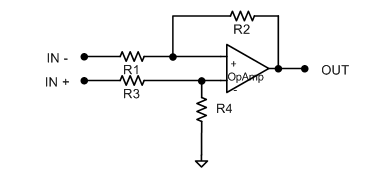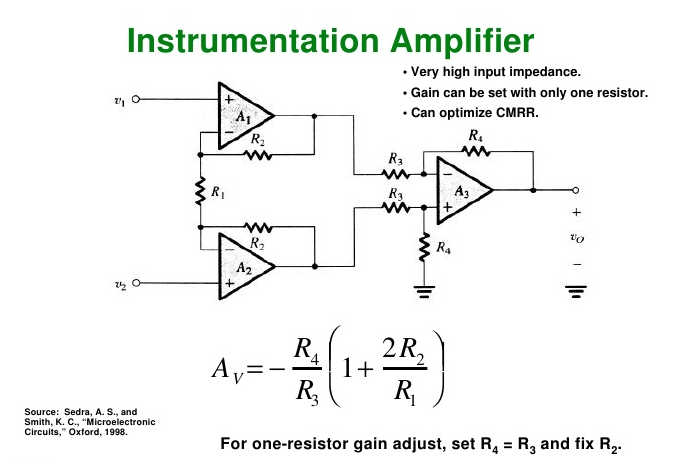Introduction to Operational Amplifiers with LTSpice
Difference Amplifiers
Difference amplifiers respond to the difference between two signals applied at its input, and rejects signals that are common to the two inputs.
A Single Op Amp Difference Amplifier
Remember that the gain of a non-inverting amplifier is positive and is given by:
and that the gain of an inverting amplifier is negative and is given by:
By combining these two topologies we are getting closer to be able to design a circuit that will be able to obtain the difference between the two input signals. In order to accomplish this, we must first make sure the gain magnitudes (think absolute values that are always positive) of each are equal. By attenuating the gain of the positive path from (1+ R2/R1) to (R2/R1), we've done exactly that. We now have four resistors; we need to make sure the gains are equal so the ratio of the resistors is important:
The problem with this circuit is that in order to obtain high gain, R1 must be relatively low. This causes the input resistance to drop. Another issue is that it isn't easy to vary the gain of this amplifier. Both of these issues are solved with the implementation of the instrumentation amplifier. Using three op amps, we can get a fine-tuned differential amplifier. Since we have the problem of low input resistance using one op amp, we can add an additional voltage follower or buffer at each input. Even more awesome is that the buffers can add to the gain, easing the burden on the difference amplifier in the second stage.
The instrumentation amplifier perfectly combines all the previous material: inverting and non-inverting amplifiers in cascade.
We will not cover integrators, differentiators, oscillators or AD converters in this tutorial. Once we start adding capacitors and inductors, the math gets a bit more specialized and generalized in terms of impedance rather than resistance. These will be a separate tutorial.




